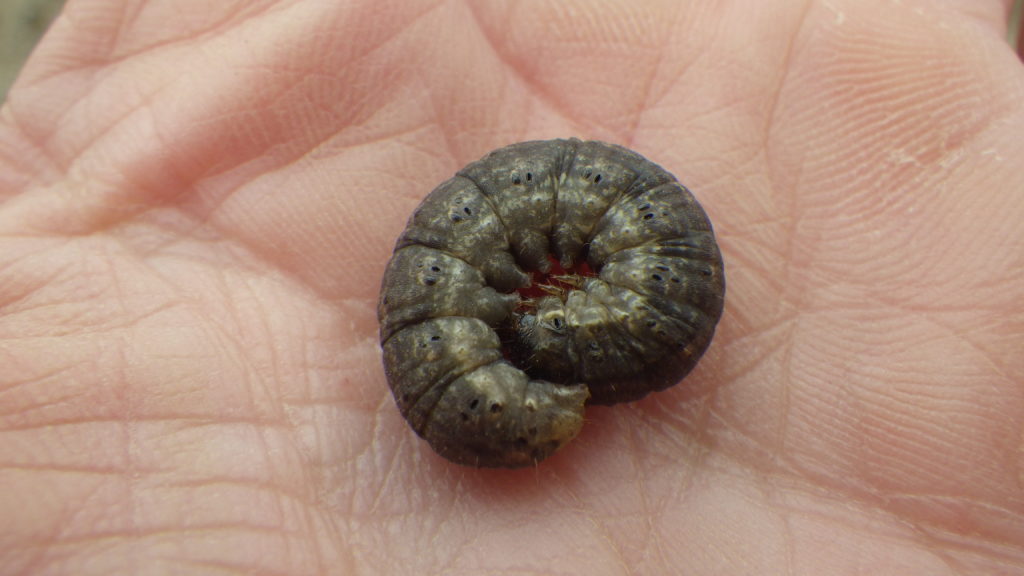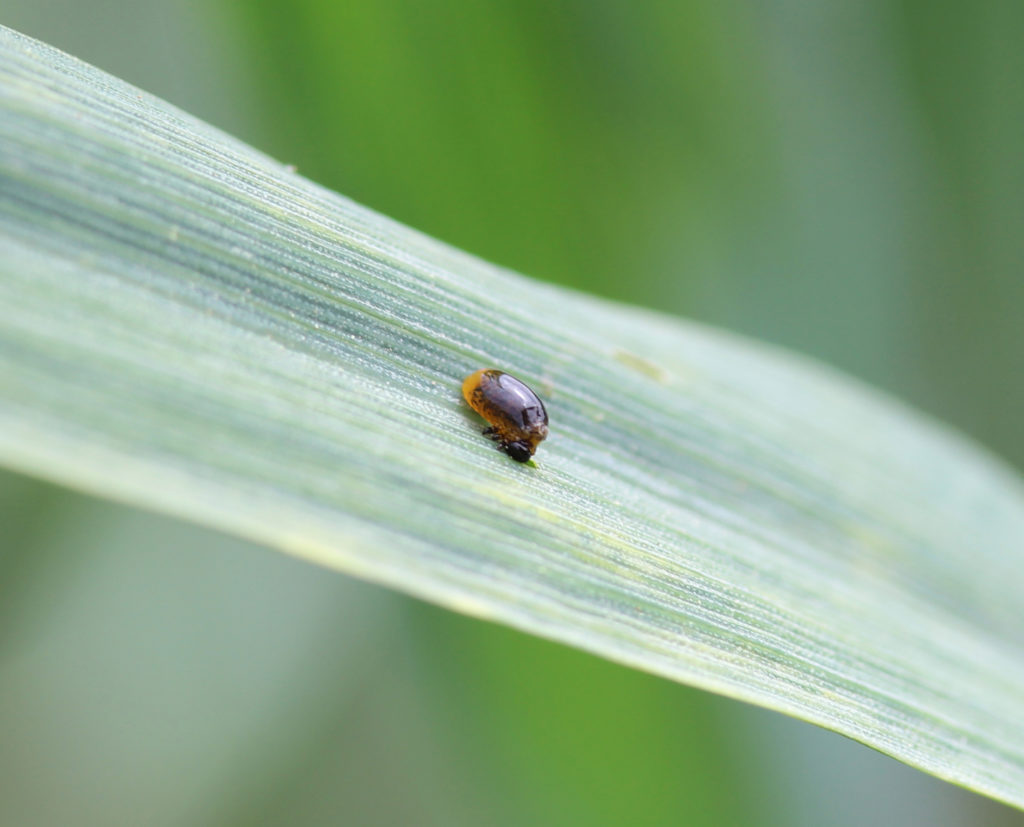It’s that kind of year. Expect the unexpected or at least don’t be surprised when something doesn’t follow the rules. It’s a wet year. That usually makes us more disease prone than insect prone. And entomopathogens (fungus that kills insects) usually kick in. But we are also dealing with very delayed planting with small plants emerging, and lack of timely weed control that encouraged some insects to lay eggs in fields.

Cutworms – mostly black but others are also showing up like variegated and dingy. There were large and frequent black cutworm moth flights on storm fronts this spring. The moths search for low lying weeds to lay eggs in. If weeds aren’t managed, the larvae feed on them and get big before the crop comes up. Some larvae being found now are too big to control. But with multiple flights, we have a range of larval sizes. And they are not only in corn but also in other crops too like soybeans. For cutworm identification, refer to the Guide to Early Season Field Crop Pests.
For corn – Scout 20 plants in 5 areas of the field. Note the crop stage and determine the number of plants being cut. Dig for larvae to determine their size. Control is warranted if the larvae are less than 2.5 cm in length and there are 2, 3, 5 and 7 plants cut out of 100 for seedling, V2, V3, and V4 stage corn plants, respectively. Corn at V5 or beyond are difficult to cut. Larvae larger than 2.5 cm will not be effectively controlled and will pupate soon.
For soybeans – There are no official thresholds for cutworms in soybeans, unless they are variegated cutworm which mostly do foliar feeding. In that situation, defoliation thresholds would be used. For cutworms that are cutting, soybeans can compensate for some stand loss. Evaluate plant stand reduction using the hula-hoop method (page 56-57 in the Agronomy Guide) to determine if control is necessary. Again, larvae must be smaller than 2.5 cm to be effectively controlled.
Cereal aphids
There are many winter wheat fields with at least some level of aphids in them. Those fields that are heading already are likely out of risk. Fields still not heading yet are at threshold if 12 to 15 aphids per stem are found and few if any natural enemies are present. Keep an eye on spring cereals for aphids this year. Though hopefully entomopathogens and other natural enemies will kick in gear by then.
Cereal leaf beetle

Infestations are scattered across the province but for some winter wheat fields the risk has already passed. One CLB adult or larvae per stem warrants control after boot but prior to heading. Or if significant feeding is found on the flag leaf in early heading stages control may be warranted if they are still actively feeding. If some are moving into spring cereals, the threshold is an average of three larvae per tiller before boot stage.
For more information on these pests and control products, refer to the Agronomy Guide for Field Crops and the Field Crop Protection Guide.